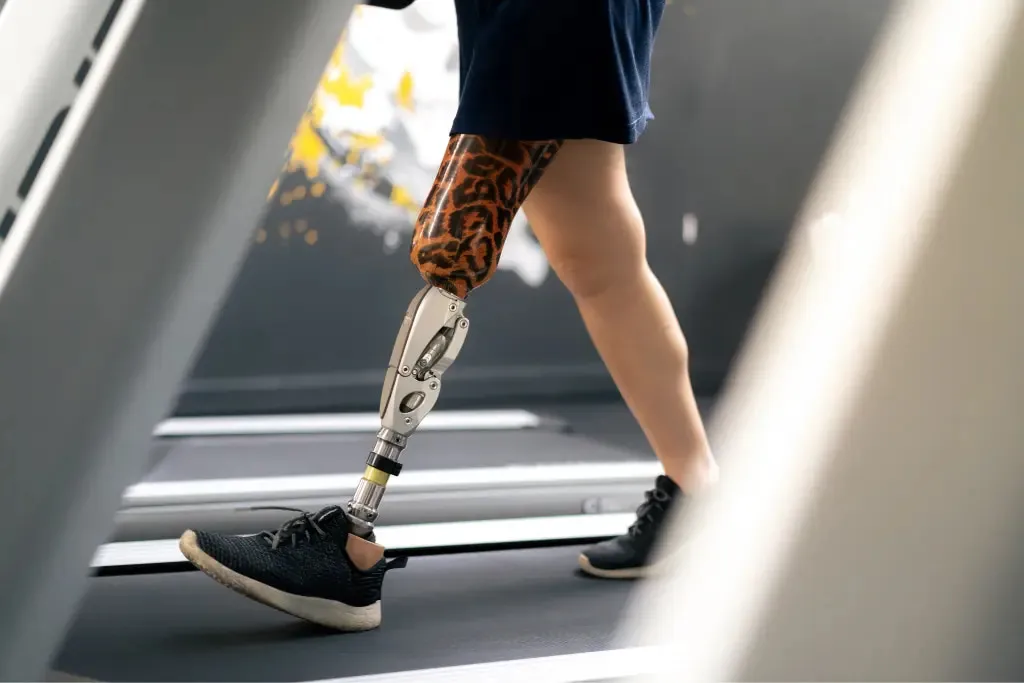Losing a leg can be one of the most challenging experiences in life. Beyond the emotional impact, practical concerns arise, including mobility and independence. A prosthetic leg plays an important role in helping regain normal life activities. However, one common question stands out: How much does a prosthetic leg cost?
Understanding the artificial limb cost is essential before making any decisions. This guide explains the key factors that influence the price and offers insight to help you prepare financially.
Factors Influencing the Prosthetic Leg Cost
The prosthetic leg cost varies with many factors. First, the type of prosthetic you need affects the price significantly. A basic prosthetic leg for simple mobility can cost less than an advanced model designed for running or sports. Let’s have a look at the factors:
1. Type of Prosthetic Leg
The kind of prosthetic leg you need directly impacts the prosthetic leg cost. For example, a simple prosthetic designed for basic walking or standing is generally more affordable. These legs focus on stability rather than high performance. On the other hand, prosthetics built for specific activities like running, hiking, or sports involve advanced technology and special joints.
These high-performance and high-quality prosthetic leg models tend to cost much more. Therefore, your daily activities and goals influence the price significantly.
2. Materials Used
Materials greatly affect the price of a prosthetic leg. Basic prosthetics often use plastic and metal parts, which are cheaper but heavier. In contrast, prosthetics made with carbon fiber or titanium are lighter and more durable. These advanced materials provide better comfort and ease of movement, but they come with a higher price tag. Since comfort and weight affect your daily experience, many users opt for these premium materials despite the increased prosthetic leg cost.
3. Level of Customization
Customization involves how well the prosthetic leg fits your unique body shape and movement needs. A standard prosthetic might be a one-size-fits-all option, costing less. However, a custom-made prosthetic requires detailed measurements, adjustments, and sometimes 3D scanning. This process demands more time, expertise, and technology. Therefore, personalized prosthetics usually cost more but provide better comfort and functionality tailored just for you.
4. Insurance Coverage
Whether or not insurance helps pay for your prosthetic leg can drastically change your out-of-pocket costs. Some insurance plans cover a large part of the device price, while others only cover specific components or none at all. Government programs like Medicare may also offer partial assistance but have specific rules and limits. Understanding your insurance benefits beforehand can help you plan your finances and reduce the burden of the artificial leg cost.
5. Geographic Location
Where you live can affect the cost of prosthetic legs. Prices vary across countries and even within regions of the same country. In some places, access to advanced prosthetic technology may be limited, which can either increase or decrease costs. Additionally, local labor and manufacturing costs, as well as taxes and import fees, play a role. For example, prosthetics in urban areas with specialized clinics might cost more than those in smaller towns. This geographic factor influences the overall prosthetic leg cost you will face.
Types of Prosthetic Legs and Their Costs
Broadly, prosthetic legs fall into three categories: basic, intermediate, and advanced.
- Basic Prosthetic Legs: These are suitable for people with low activity levels. They typically range from $5,000 to $7,000. They offer essential mobility and are usually made with standard materials.
- Intermediate Prosthetic Legs: Designed for moderately active users, these legs can cost between $7,000 and $15,000. They come with better components, such as improved joints and lighter materials.
- Advanced Prosthetic Legs: These models are for athletes or highly active users. Prices for prosthetic legs start from $15,000 up to $50,000 or more. These prosthetics include advanced technology like microprocessor-controlled joints, providing better control and comfort.
Additional Costs to Consider
While the prosthetic leg cost covers the initial device, there are other expenses to keep in mind.
Fittings and adjustments are necessary to ensure comfort. Frequent visits to the prosthetist may be required, especially in the first year. These visits can add hundreds or thousands of dollars.
Maintenance and repairs are inevitable. Regular check-ups keep the prosthetic working well, but parts may wear out and need replacing.
Replacement costs should be planned. Prosthetic legs usually last 3 to 5 years before needing a new one.
Insurance and Financial Assistance
Many people worry about covering the prosthetic leg cost. Fortunately, insurance may help reduce the financial burden. Some plans cover a significant portion of the device and services.
Medicare and Medicaid in the U.S. offer prosthetic coverage but vary in what they cover. Checking your insurance details before purchasing is crucial.
Several nonprofits and government programs provide financial assistance. Researching these options can make prosthetic care more affordable.
Conclusion
The prosthetic leg cost depends on multiple factors such as the type, materials, and additional services like fittings and maintenance. Insurance coverage can help reduce the expense, but planning for ongoing costs is important. Choosing the right prosthetic leg requires careful thought and professional guidance.
Investing in a prosthetic leg is investing in quality of life. It allows individuals to regain mobility and confidence. While the price varies, knowing what to expect can ease financial stress.
At OPC, we understand the challenges faced by individuals needing prosthetic limbs. Our team offers personalized advice to help you find the right option within your budget. Reach out to us today and take the first step toward greater independence. Let us support you in making informed decisions about prosthetic care.



